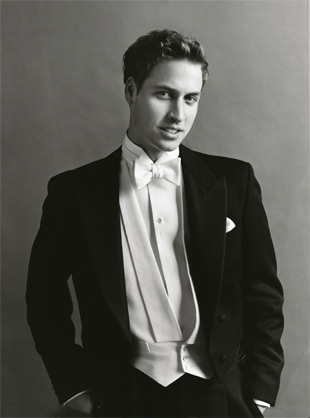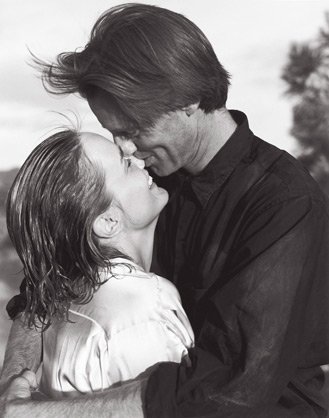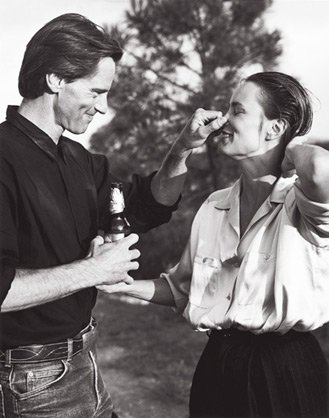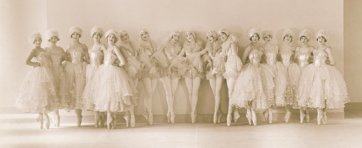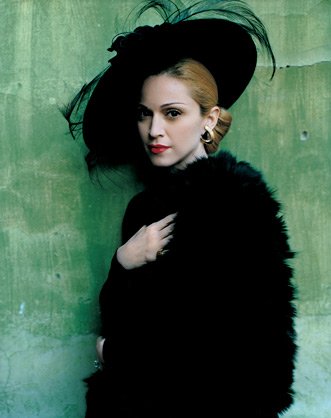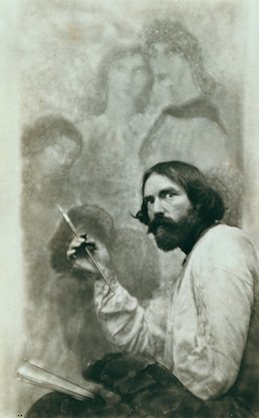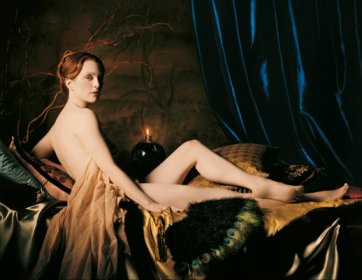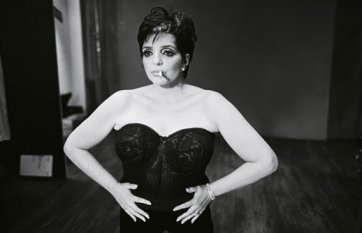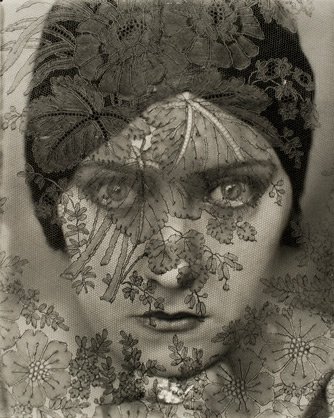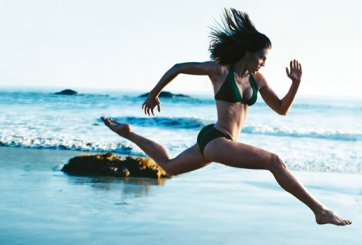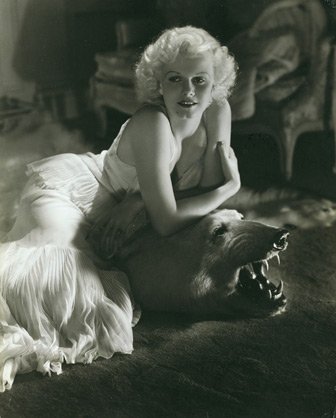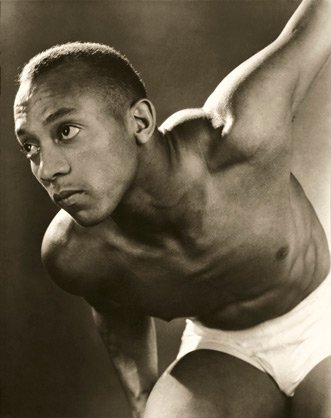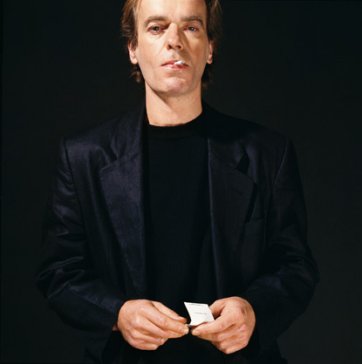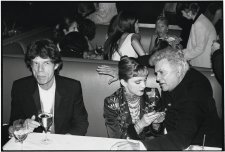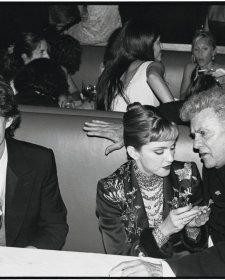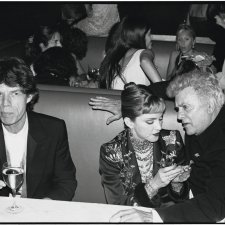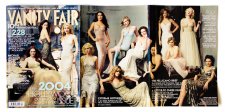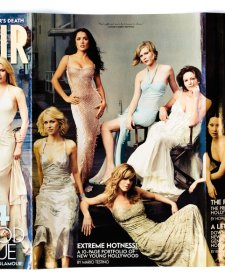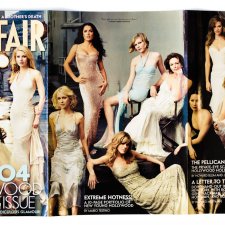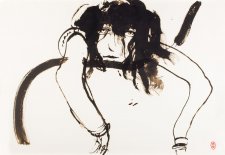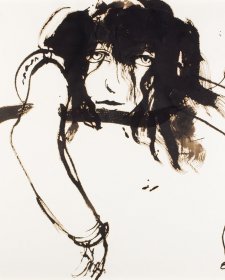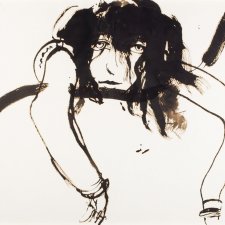Vanity Fair lay dormant for nearly half a century. But the magazine seemed ready to be roused from slumber. A vibrant cosmopolitan spirit was coursing through the culture in the early 1980s. And, believing that a revamped and resurrected Vanity Fair might perfectly suit the times, SI Newhouse Jr, chairman of Condé Nast Publications sought to bring it back to life. He had a hunch that the title’s prestigious legacy in the arts – including its knack for creating photographic icons of the high and mighty – would still hold sway in sophisticated circles.
The go-go 1980s and 1990s would soon become something of a mirror of the Jazz Age; the hothouse era that had given the earlier Vanity Fair (published from 1913 to 1936) its sizzle – and its talent pool of writers, illustrators and photographers. In 1983, as the magazine was relaunched, Silicon Valley and Wall Street were buoyant, high society was in full swing, and men and women of maverick vision and social standing were making their mark. By 1987 their ranks would be savagely lampooned by Tom Wolfe’s aptly titled novel The Bonfire of the Vanities. In addition, the art market was exploding. Advertising was ascendant. Everyone from politicians to restaurateurs employed image consultants. And nightlife was thriving, riding on the coattails of the decadent 1970s, though the AIDS pandemic was beginning to cast its pall.
Newhouse’s notion seemed a safe enough bet. Celebrity culture had secured such a hold on the contemporary psyche that the art of ‘presenting personalities’, according to Condé Nast editorial director Alexander Liberman, had become ‘the obsession of our time’. Photographic portraiture increasingly occupied museum and gallery walls and fuelled the fashion world, where runway waifs had morphed into supermodels. Movie and TV stars dominated the pages of magazines like People, which had been introduced the decade before. As new, industry-shifting platforms arose for entertainment and information – the Walkman and Game Boy, CD and camcorder, satellite television and Blockbuster, the Macintosh and MTV – it seemed as if media, in the words of culture critic Frank Rich, had usurped nature as ‘America’s backdrop’. Media consumers, in turn, became more and more preoccupied with personal narratives of the figures that permeated this ever-present overlay of video clips, audio streams, and computer and movie screens.
In this environment there appeared to be an audience eager for a tasteful, high-end, generalinterest glossy, for a publication that could elevate actors into the same lofty orbit as artists and authors. The idea behind Vanity Fair seemed ripe. So a determined Mr Newhouse conscripted Christina Hambley Brown – Tina, she was called – a saucy, savvy editor from England by way of Punch, The Times and Tatler to take charge. Brown understood how to calibrate rapid-fire word and image so as to echo the pulse of the modern age. She abhorred the notion, as she put it, ‘that visual excitement is somehow at odds with intellectual content’, and would eventually assert that ‘V.F. is the quintessential postmodern magazine. It is the great high-low show: Demi Moore’s pregnant belly side by side with Martha Graham’s dance aesthetic.’
Brown set about mixing her magazine’s ingredients: celebrity profiles, high-society scandal, all manner of decadence, high-calibre reportage and literary firepower. She courted authority figures and power players. She valued the elegant and refined, yet strove for controversy. And, as did the earlier V.F., Brown’s depended on inventive photography – the graphic bedrock of the magazine. High-impact portraits of personalities would appeal to the modern-day reader accustomed to overstimulation and instant gratification in the warp-speed, ad-addled, visual age. The new magazine settled on one photographer to be its chief image-maker. Annie Leibovitz was wooed away from Rolling Stone even before Brown arrived, with the promise that she would be V.F.’s latter-day Edward Steichen, just as the ‘modern’ Steichen had been wooed into the Condé Nast fold in 1923 to replace the dusty Baron De Meyer when his soft-focussed style was on the wane.
Some of the magazine’s best-remembered images of the 1980s and early 1990s tended to be suggestive and sexually charged. Steven Meisel depicted actress Daryl Hannah as a Barbarella-esque temptress in a futuristic wet suit. Photographer Bill King’s Raquel Welch was enveloped in a damp campy scrum of naked male Olympians. The magazine’s subjects in concert with V.F.’s photographers were pushing photo sessions to their limits in a performance-art satire of their own celebrity. The images – Lauren Hutton wrestling an alligator by Helmut Newton; Princess Caroline of Monaco, in a tiara and royalblue gown, clutching a nappy-clad baby by Karl Lagerfeld – were a wink to the reader; postmodern fame was sometimes sustained or amplified by letting the viewer lift the curtain on the artifice required to maintain one’s public persona.
In 1992 Newhouse enlisted Graydon Carter – a veteran of both Time and Life, co-founder of the inimitable Spy, an editor of the New York Observer – to try his hand at V.F.’s helm. He had a shrewd news sense and cultural intuition. Soon Carter, with his charm, Falstaffian sociability, and ravenous curiosity (the latter trait also possessed, not surprisingly, by all great photographers), brought the magazine to new levels of journalistic prowess, photographic ambition, and profitability. In time, Carter’s magazine became the publishing world’s acknowledged arbiter of power, personality and society, and a monthly ‘must-see’ among tastemakers and trendsetters in the corridors of influence around the globe. Vanity Fair also became a more bounteous eyeful. Marquee-named portraitists came on board to join Leibovitz and Co. – Patrick Demarchelier, Jonas Karlsson, David LaChapelle, Mark Seliger, Snowdon, Mario Testino, Bruce Weber, along with fashion and style director Michael Roberts – giving V.F. the most formidable photographic roster in the business. The lavish picture spreads they produced felt even more enticing and seductive than the adjacent advertisements.
The leading figures of the day were registered in the social retina by how they were rendered through V.F.’s lens. Vanity Fair photo sessions would help shape the way that the world viewed everyone from Jack Nicholson to Helen Mirren to Rupert Murdoch. Madonna, the Merlin of public image would appear on V.F.’s cover a record ten times, in part, to test-run her roles as ingénue, sex-book purveyor, serious actress, new mother. When V.F., in 1998, secured a much-coveted photo session with Monica Lewinsky, New York Times columnist Maureen Dowd declared, ‘Getting your own photo shoot in Vanity Fair has become the premier achievement in our celebrity-mad culture.’ Carter would concur: ‘Many of the magazine’s most memorable photographs are, in fact, the iconic images of their subjects.’
Then, of course, there is the Vanity Fair cover as provocation. Over the years, V.F. façades have feature men’s abs – Heath Ledger, David Beckham, Brad Pitt – double-take-inducing cover lines and ample nudity. Leibovitz’s 2006 Hollywood Issue cover juxtaposed two of cinema’s hottest young stars, Scarlett Johansson and Keira Knightley, with the latter being nuzzled by fashion mogul Tom Ford, fully clothed, in a send-up of Edouard Manet’s radical painting Le Déjeuner sur l’Herbe which had caused an uproar in 1863 for its frank exploration of sexual politics. No single photographer in the late twentieth century has had a greater influence on portraiture than Annie Leibovitz. Her pictures, first for Rolling Stone and since 1983 for Vogue and Vanity Fair – along with her advertising campaigns for companies such as American Express – have made her the most imitated image-maker of her generation, and the most famous. Many of Leibovitz’s pictures attain a painterly cast and complexity. Her subjects are often depicted in full figure, their bodies set against ornate backgrounds. Many of her recent portraits, for all their inner fluidity, are painstakingly composed mini-dramas. Leibovitz’s 2001 Hollywood Issue double gatefold was one of her most ambitious cover shoots because of the logistical challenges of photographing ten A-list actresses – Cate Blanchett, Penélope Cruz, Nicole Kidman, Catherine Deneuve, Sophia Loren, Gwyneth Paltrow, Meryl Streep, Vanessa Redgrave, Kate Winslet and Chlöe Sevigny – in three locations, New York, Los Angeles and London and most impressive of all was the way she conceived and executed the triptych as a single orchestrated image.
Vanity Fair photographers such as Demarchelier, Leibovitz, Steven Meisel, Helmut Newton, Mario Testino and Bruce Weber have shot some of the best-remembered fashion and advertising spreads of the age – most of them, in fact, running in Vanity Fair. However, if any fashion-trained portraitist today is considered photographic royalty, it is Testino, who has been said to elicit ‘a nonchalant sensual beauty’ from his subjects. When Diana, Princess of Wales, sat for what would be her last major portrait session the photographer she chose was Testino; her sons, Princes William and Harry, later agreed to sit for him as well. A Peruvian dynamo of Italian, Spanish and Irish extraction, he produces images, says V.F.’s David Harris, of ‘polished, flawless glamour – the most beautiful people you have ever seen in your life – bronzed skin, long legs, fabulous shoes, Mario world. He’s the most voyeuristic vision. He’s got that great Latin drive’.
Vanity Fair’s portraiture tends towards the polished and theatrical as opposed to the varnished and informal. The magazine, after all, is part of a publishing company that has thrived by valuing quality, recognising excellence, heralding those who help change the culture and promoting the trappings of achievement and the good life, high style and the arts. As such, V.F.’s photographic tone over the years, despite its often ironic, antic, or decadent content has been generally glossy and stylised. That style has been characterised by pin-sharp focus, compositional symmetry, elaborate productions in lush settings and sometimes impossibly perfect lighting. The images retain a formality for all their flair.
Unlike portraits in most other magazines, which seem to have been taken by a generic eye, V.F.’s have the imprint of a recognisable auteur. As a rule, the magazine has avoided many of the photographic fads of the past three decades. There has been little cross-processing or flashblur haloing or purely digital confabulation. No serial decapitations, tilt-frame horizons, street-style faux-documentary work. There has been hardly a hint of ‘heroin chic’ chicanery – no runny eyeliner or carefully mismatched attire in dank rumpus rooms. There are neither hyper-real computerized scenes of oversaturated hue nor large-scale dioramas with emotion-neutral subjects suspended in a stasis of washed-out colour.
That said, Vanity Fair has covered much of the rest of the waterfront from glamour to masquerade to portraiture-as-grandperformance, from jarringly clinical close-ups to environmental portraits, to large-format mise-en-scènes borrowing the conventions of film stills and an astute selection of archival imagery, courtesy of the magazine’s peerless photoresearch team. In the process, readers have come to expect this when they open each issue they will receive their requisite ration of visual octane.
Since no portrait can reveal a person’s authentic depth – only the photographer’s interpretation or the viewer’s bias, or the sitters attempt to project an imagined self – portraiture acts as a form of visual shorthand in the age of runaway fame, a period in which the Internet and 24-7 news foster the impulse to make snap judgements and end up blurring the boundaries between public and private, formal and vernacular, art and commerce, exhibitionism and voyeurism, appearance and substance, image and identity. Each magazine portrait touches in some way upon one or more of these ambiguities.
Vanity Fair’s modern-era photographers, in the end, have taken on the mantle of their Jazz Age counterparts, who helped perfect a new genre: the personality portrait. They have proved themselves worthy heirs to Edward Steichen, who was, in the words of photography scholar Joel Smith, ‘the founding auteur of a century of celebrity’. The result has been that image-making, in the pages of Vanity Fair, is at times a triumph of icon crafting. Countless Polaroids and pixels have been sacrificed in the creation of a single personadefining portrait. In short, Vanity Fair, in the judgement of the editors of American Photo, is nothing less than ‘the ground zero of modern iconography’, an indispensable gauge for defining who matters in the culture – and how distinctively they inhabit their public image in the media-steeped age.
David Friend is Editor of Creative Development at Vanity Fair, and formerly Life’s Director of Photography. This essay is an excerpt from the catalogue Vanity Fair Portraits: Photographs 1913-2008 and from the book Vanity Fair, the Portraits, both published by the National Portrait Gallery, London.
